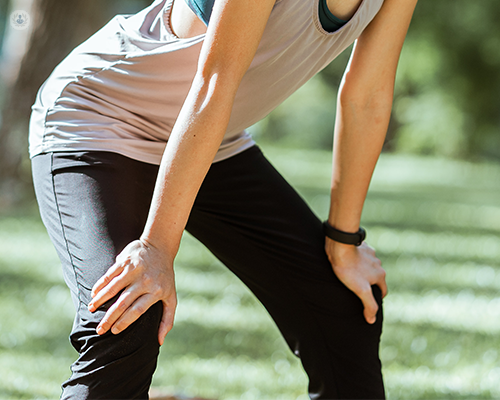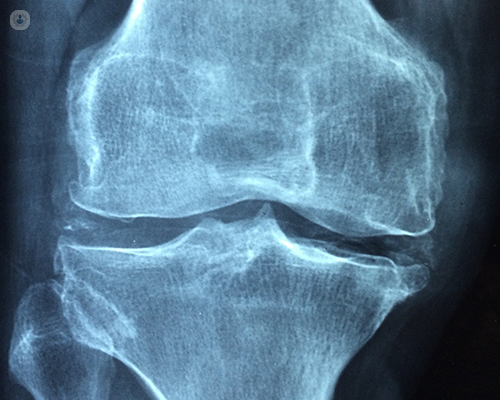Hip-related knee pain: possible causes explained
Autore:Both the hip and knee joint are very important for walking and standing. Sometimes, patients have a problem with their hip, but they might feel the pain in their knee. Likewise, this might happen vice versa: there is a knee problem, but they feel the pain in their hip.

How the hip and knee are connected
The hip and knee are connected by the femur bone (also called the thigh bone).
- The hip joint is a ball and socket joint at the top of the femur bone
- The knee joint is more like a hinge joint and is at the bottom of the femur bone
Symptoms of hip-related knee pain
- If you get pain on the outer side of your knee, in particular when standing or running, this can sometimes be caused by a hip problem.
- If you move your hip but your knee hurts, the pain is probably coming from your hip.
- Rotate your hip joint in and out. If this hurts your leg near your knee, then the pain may be caused by your hip.

Common causes of hip-related knee pain
Common examples of hip-related knee pain are:
- Iliotibial band friction syndrome
- Osteoarthritis of the hip
- Tight hip muscles
Groups of patients with hip-related knee pain
There are generally two types of patients that have hip related-knee pain.
- Older patients with arthritis
- Younger patients with tight iliotibial bands
Older patients with arthritis
Some patients, particularly middle-aged and elderly patients with hip and/or knee arthritis, experience a strange sensation that’s called referred pain. Referred pain is essentially pain that’s felt in a different place. This happens because the nerves that make us feel pain run through our body: the nerves that supply the hip also travel to the knee, and if the nerve is irritated at the hip, you may feel it at the knee.
Osteoarthritis (the most common type of arthritis) is the wear and tear of a joint. It means that the padding (cartilage) in the affected joint wears away. Surprisingly, the amount of young people with hip and knee osteoarthritis is growing, but we don’t yet understand why. Recently, I performed a hip replacement on someone as young as 22 years old.
Younger patients with tight bands
In younger patients, if the pain isn’t arthritis-related, it’s most commonly a tight bit of tissue called the iliotibial band. When this structure is tight, it causes friction and rubbing and you tend to notice it more at the outer part of your knee.
It’s not uncommon for muscles to be tight. In the context of hip and knee pain, it generally means that muscles and tendons that cover the hip joint are tight or are not regularly stretched enough. Common muscles around the hip that can be tight are:
- The thigh adductor muscles
- The hip flexors, like the psoas muscle
- The hip adductors (like the gluteus medius)
- The iliotibial band that connects the outer part of the hip to the thigh and knee
A tight iliotibial band often affects people who do a lot of activities, particularly leisure running and long-distance running.
Fixing hip-related knee pain
First of all, we need to properly assess the hip and knee so that we can determine if your knee pain is definitely caused by a hip issue.
- You’ll have an initial consultation with a specialist who will take a full medical history. Your specialist will ask about knee swelling, locking, etc.
- You’ll undergo a physical examination and the specialist will try to move the hip in a particular direction to see if that results in knee pain. They will also do the same with the knee.
- They might recommend imagining scans such as an X-ray, CT scan, ultrasound or MRI.
Once we determine a diagnosis, we (orthopaedic surgeons) can talk you through non-surgical and/or surgical options, based on the cause of your knee pain and your individual preferences.
Click here to learn how Mr Imbuldeniya can help you take control of hip and knee concerns.


